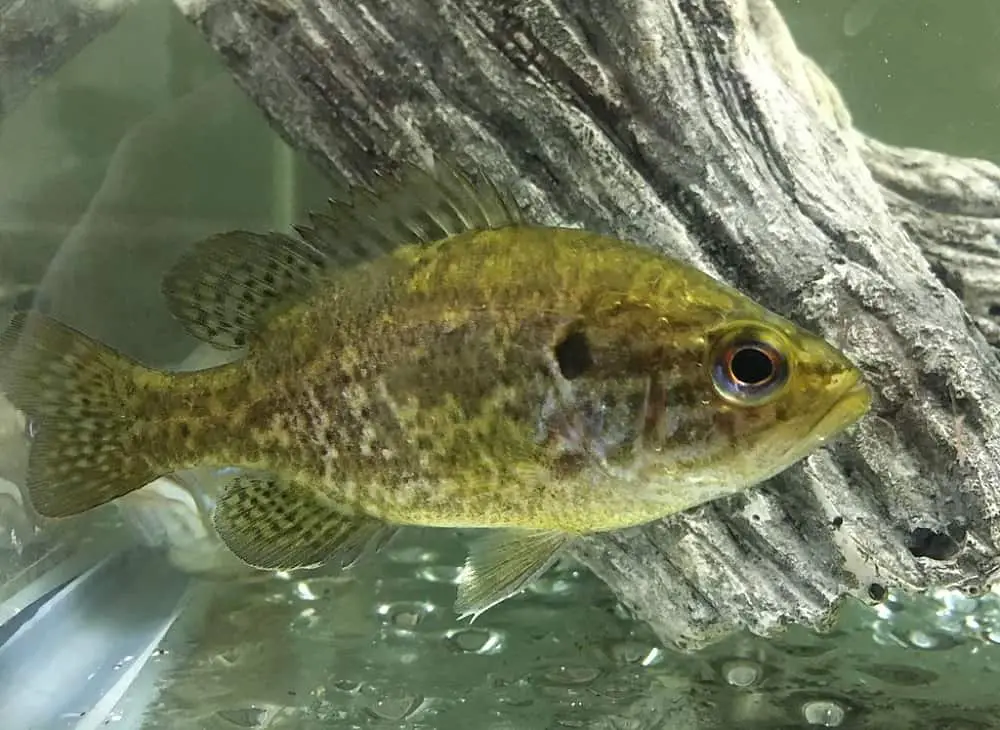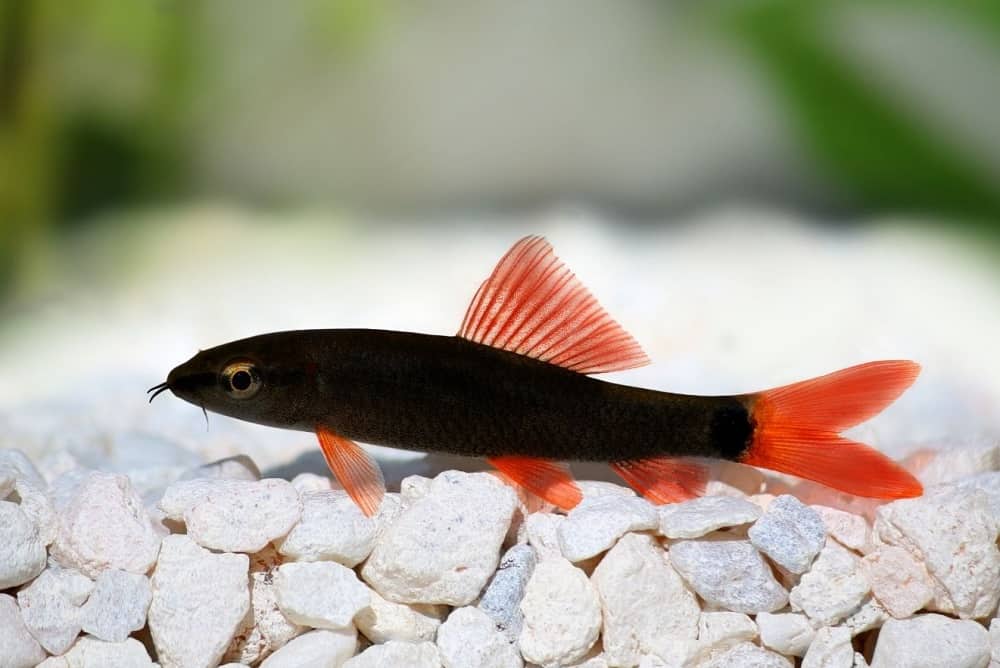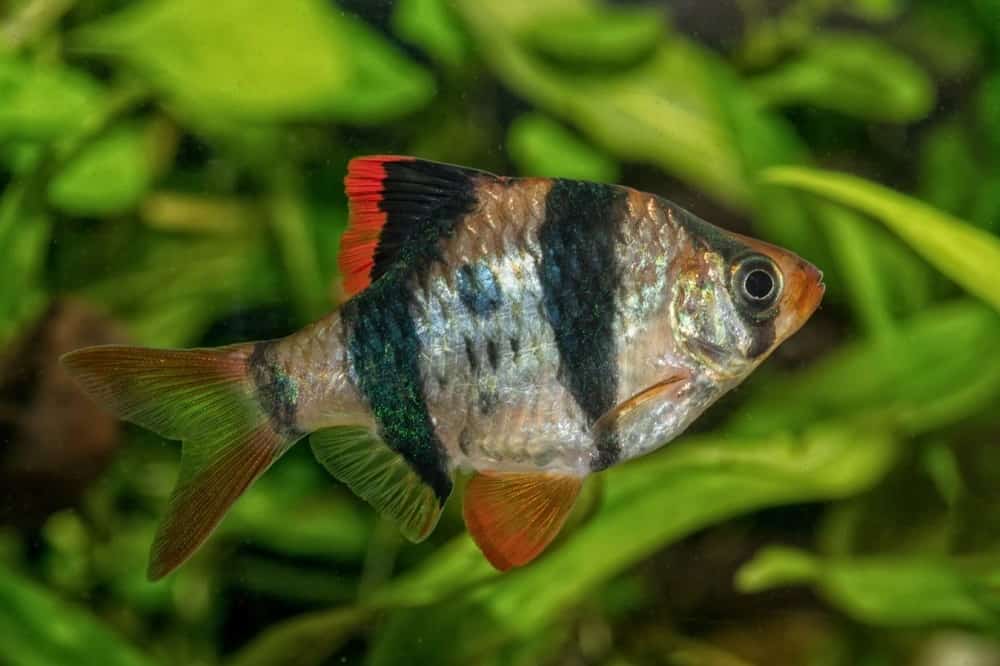Warmouths are a species of freshwater fish found in the rivers and lakes of the Eastern United States. They are not a very popular choice for domestic aquariums despite being hardy and fairly easy to look after. They have a reputation for being aggressive which could explain why they are less popular with aquarists than other freshwater fish.

Are you considering keeping Warmouth in your aquarium? Or perhaps you just want to find out more about this interesting species of fish? Keep reading for lots of useful information about their tank requirements, behavioural traits, diet, appearance and more.
Species Summary
Warmouths are a non-migratory species of predatory freshwater fish. They are known for being aggressive and resilient in the wild, and are found in the rivers, bays, lakes and basins along the Eastern coast of the United states. They can also live as far North as Canada, which has some popular breeding sites for this species.
Warmouths are ‘sit and wait’ predators, who wait for their prey to come to them by hiding themselves and then ambushing the prey. They thrive best in murky water with plenty of dense vegetation. This allows them to sneak up on their prey but also hide from predators..
Warmouths can survive in turbid streams with low oxygen levels, often persevering through conditions that would kill other fish, even similar species like sunfish. In the wild, Warmouth predators include snakes, turtles, alligators, birds and larger fish.
Care Guide
Tank Size
These fish don’t require as much space as other freshwater fish, as they spend a lot of time hiding in vegetation. 55 gallons is recommended as the minimum, but in a domestic environment they are more likely to swim and explore for fun than in the wild, so they would enjoy more space if you can provide it.
Tank Mates
Whilst Warmouths have a reputation for being quite aggressive, this is often in the wild when they are hunting. They are also known to bite humans who swim and fish in their territory. However, in a tank environment where they are fed a regularly on a high protein diet they can actually make quite docile tank mates
We recommend trying them with sunfish and cichlids who require similar water parameters. Keep in mind that Warmouths are predatory fish and will try to eat smaller fish, so ensure the tank mates you choose are a similar size to the Warmouths or larger.
Same Species Tanks
Warmouths don’t live in communities in the wild. They tend to remain solitary until it is time to breed, so housing multiple Warmouths in the same tank is not ideal. They are also more likely to show aggression to members of their own species, especially during mating season.
However, if you do intend on keeping a small community of Warmouths, you will need to make sure the tank is plenty big enough. Feeding time will be important to ensure the fish don’t feel that they are in competition with each other other for food. Feeding your Warmouths a protein-rich diet with regular feeding times should help to reduce displays of aggression towards members of the same species.
Water Parameters
The Warmouth’s natural habitat has slow moving water so they would prefer a tank where the pump is not too strong. Warmouths are a carnivorous species of fish so they produce a lot of nutrient-rich waste.
This means you will need a very good filter and regular water changes to stop the water from becoming polluted and dirty.
Warmouths are a resilient species and they can thrive in a wide range of conditions. The temperature of the water can be below 70 degrees fahrenheit which is unusual for a freshwater aquarium. The PH level of the water can be up to 8.3, but a neutral PH level of around 7.0 is best. They can live in quite hard water with low oxygen levels.
If you are housing Warmouths in a tank with other species, you can match the water parameters to the more specific requirements of their tank mates.
What To Put In Their Tank
To recreate the Warmouth’s natural habitat, we recommend a gravel substrate rather than sand. They like to be surrounded with lots of dense vegetation to hide in.
If you don’t think you can care for lots of plant life in the tank then fake plants will be fine. Provide plenty of rocks for them to hide behind, as they are quite secretive and private, but leave enough room for them to swim when they want to.
Common Diseases
Warmouths are a hardy and resilient species and are not particularly susceptible to illness and disease. Health issues for freshwater fish in domestic aquariums are often caused by incorrect water parameters, but Warmouths can thrive in various conditions so they are not as vulnerable.
Stress can also make your fish more likely to become ill. As long as you have provided plenty of vegetation so the Warmouths can have their privacy, they are unlikely to become stressed.
The biggest risk with Warmouths is the cleanliness of the tank. As we mentioned earlier, they will produce a lot of waste due to their high protein diet. Make sure you are keeping the tank clean and the water is being filtered and changed, or they could be at risk of parasites and infection.
Food & Diet
Warmouths are a carnivorous species of fish. In the wild, the diet of an adult Warmouth will consist mainly of insects, crayfish, freshwater shrimp, and other smaller fish. Juvenile Warmouths will eat crustaceans and insect larvae.
In a domestic tank environment, Warmouths are known to enjoy a diet of frozen food with some occasional live food for variation. Try feeding them bloodworms and large shrimp- brine shrimp will be too small. Most small aquatic animals and insects should be suitable for them to eat. They can be greedy and will swallow multiple pieces of food at once.
This high protein diet should be provided on most days. Regular feeding patterns can help to reduce aggressive behaviour towards their tank mates.
However, if you want to mimic a predatory lifestyle as they would have in the wild, you should avoid feeding them for a day now and again. This will replicate the hunting style in the wild in which some days are unsuccessful.
Lifespan
There is not as much information available about the lifespan of Warmouths compared to other freshwater fish. In the wild they have been known to live up to 8 years, but it can vary depending on the area and the water conditions.
They can be quite private and secretive which makes them difficult to study and research.
In a domestic aquarium, Warmouths should live a minimum of 3 years. If they are happy and healthy this could be more like 6 years.
Appearance
Warmouths have dark coloring, with a golden underside and a brown mottled topside. They have distinctive reddish brown streaks which radiate from their eyes. Their bodies are heavy, with spiny fins and red gill flaps. They are known for their large mouths and they have small teeth on their tongue.
Size
Warmouths in a domestic tank will likely grow to around 4 to 10 inches long, but in the wild they can grow up to 12 inches and weigh up to 1 kg.
Behaviour & Temperament
These secretive fish spend a lot of time hiding. They prefer murky, muddy water and stay close to the bottom. When they come out of hiding to eat, they often spend a bit of time exploring the whole tank and swimming around.
They can be aggressive, especially in the wild but are often more docile in a tank environment.
Breeding
In the wild, pawning begins in the spring when the water temperature reaches 70 degrees fahrenheit, usually May through to July.
Males will construct a disc shaped nest in the gravel substrate by fanning their tails. After the female lays eggs, the male will fertilize them and guard them fiercely from any threat, including other female Warmouths.
The eggs incubate for 3 days until they hatch. The father will continue to defend the small fry until they have been hatched for 5 days, at which point they will leave the nest.
Gender Differences: Male vs Female
Males and females look mostly similar but there are a few ways to differentiate them. The males have a vibrant orange spot at the bottom of the dorsal fin, and their eyes turn red during mating season.
Males also grow at a faster rate than females and are generally more colorful. Females get plumper in the spawning season.
Fun Facts
- Other local names for the Warmouth include Molly, Red-eye, Goggle-eye, Red-eyed bream and Strawberry Perch.
- Warmouths are sometimes confused with the Rockbass or the Green Sunfish as they have a similar appearance, but warmouths are bigger with slightly different coloring.








